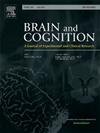Flight training-induced stage-specific reorganization of the ventral visual network in pilots: evidence from longitudinal and cross-sectional studies
IF 1.4
3区 心理学
Q3 NEUROSCIENCES
引用次数: 0
Abstract
Aviation safety critically depends on pilots’ visual processing abilities. Understanding the plasticity of its neural mechanisms can inform flight training optimization. This study used longitudinal and cross-sectional designs to investigate how long-term flight training affects functional reorganization within the ventral and dorsal visual networks. Multimodal MRI data were collected from 136 participants across two experiments: Experiment 1 (25 flight cadets, 24 controls) and Experiment 2 (48 pilots, 39 controls). Longitudinal analysis showed that cadets exhibited a significant decrease in ventral network clustering coefficient and local efficiency after three years of training (population × time interaction). Cross-sectional results revealed that professional pilots had reduced small-worldness and global efficiency in the ventral network, both negatively correlated with flight hours, while characteristic path length was positively correlated. No significant differences were observed in the dorsal visual network. These findings suggest that flight training induces stage-specific topological remodeling of the ventral visual network, possibly through local pruning and enhanced global integration. Moreover, the ventral network demonstrates greater sensitivity to flight-related experience than the dorsal pathway. This study advances understanding of neural adaptation in aviation and offers insights into stage-specific training strategies for optimizing pilot performance.
飞行训练诱导的飞行员腹侧视觉网络的阶段特异性重组:来自纵向和横断面研究的证据
航空安全严重依赖于飞行员的视觉处理能力。了解其神经机制的可塑性可以为优化飞行训练提供依据。本研究采用纵向和横断面设计来研究长期飞行训练如何影响腹侧和背侧视觉网络的功能重组。实验1(25名飞行学员,24名对照)和实验2(48名飞行员,39名对照)分别收集了136名参与者的多模态MRI数据。纵向分析表明,经过3年的训练,学员的腹侧网络聚类系数和局部效率显著降低(种群×时间交互作用)。横断面结果显示,职业飞行员在腹侧网络中的小世界性和全局效率均与飞行时数呈负相关,而特征路径长度呈正相关。背侧视觉网络无明显差异。这些发现表明,飞行训练可能通过局部修剪和增强全球整合,诱导腹侧视觉网络的特定阶段拓扑重塑。此外,腹侧神经网络比背侧神经网络对飞行相关体验更敏感。这项研究促进了对航空神经适应的理解,并为优化飞行员表现的阶段特定训练策略提供了见解。
本文章由计算机程序翻译,如有差异,请以英文原文为准。
求助全文
约1分钟内获得全文
求助全文
来源期刊

Brain and Cognition
医学-神经科学
CiteScore
4.60
自引率
0.00%
发文量
46
审稿时长
6 months
期刊介绍:
Brain and Cognition is a forum for the integration of the neurosciences and cognitive sciences. B&C publishes peer-reviewed research articles, theoretical papers, case histories that address important theoretical issues, and historical articles into the interaction between cognitive function and brain processes. The focus is on rigorous studies of an empirical or theoretical nature and which make an original contribution to our knowledge about the involvement of the nervous system in cognition. Coverage includes, but is not limited to memory, learning, emotion, perception, movement, music or praxis in relationship to brain structure or function. Published articles will typically address issues relating some aspect of cognitive function to its neurological substrates with clear theoretical import, formulating new hypotheses or refuting previously established hypotheses. Clinical papers are welcome if they raise issues of theoretical importance or concern and shed light on the interaction between brain function and cognitive function. We welcome review articles that clearly contribute a new perspective or integration, beyond summarizing the literature in the field; authors of review articles should make explicit where the contribution lies. We also welcome proposals for special issues on aspects of the relation between cognition and the structure and function of the nervous system. Such proposals can be made directly to the Editor-in-Chief from individuals interested in being guest editors for such collections.
 求助内容:
求助内容: 应助结果提醒方式:
应助结果提醒方式:


